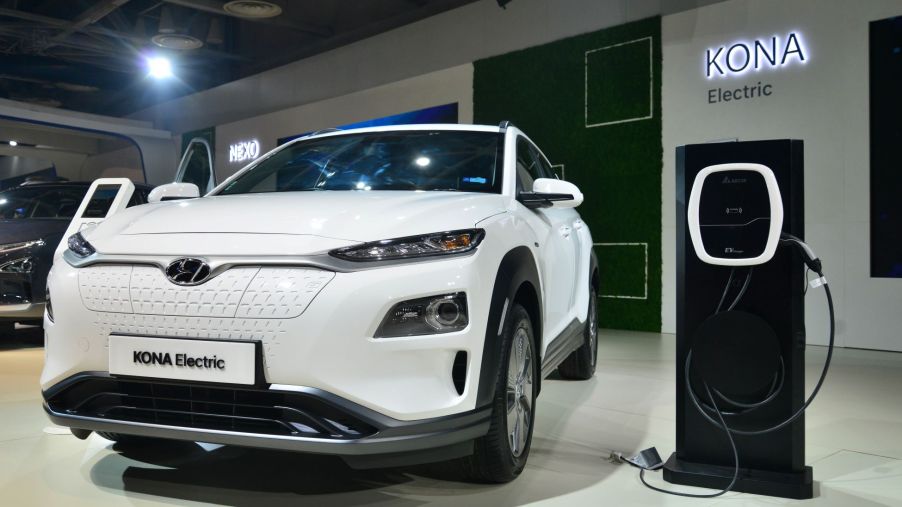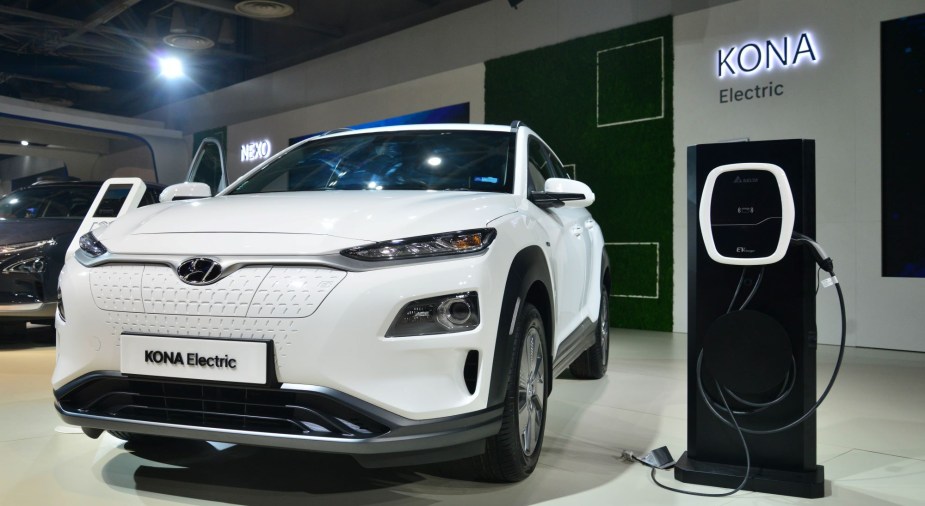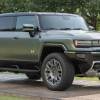
3 Reasons to Buy a 2022 Hyundai Kona Electric, Not a Hyundai Ioniq 5
The EV industry has grown by leaps and bounds in recent years thanks to legislation passed that incentivizes ownership and production. This has been a complete about-face for some manufacturers from the gas-powered vehicles they have cranked out for years.
Hyundai has stepped up its game in recent years and is now embracing the EV revolution that is taking place in the industry.
In the realm of electric SUVs, Hyundai has some strong contenders on the market. One of its most affordable and reliable electric SUVs, the Kona Electric, has some competition this year in the Ioniq 5. However, the Kona Electric has a few attributes that make it a better choice than the Ioniq 5. Let’s look at three reasons you should buy the Kona Electric over the Ioniq 5.
1. The Kona Electric is more affordable

Car buyers in today’s market are looking for the best value for EVs. Hyundai has taken the EV market by surprise with its affordable lineup of EVs.
The starting MSRP of the Kona Electric is $34,000 before the EV tax credit, and the MSRP of the Ioniq 5 is $44,000. Additionally, the supply is minimal. Although both models are affordable, the Kona Electric is slightly cheaper. Additionally, you will spend less time on the charge, thanks to the fuel economy.
2. The Kona Electric has better fuel economy
Consumer reports state that Kona Electric’s overall mileage is 120 mpge, city mileage is 132 mpge, and highway mileage is 108 mpge thanks to the 64 kWh battery. It has an impressive EPA estimated range of 258 miles. Consumer Reports says that it took them seven hours to charge from 25% to full on a 240-volt connector.
The Ioniq 5, on the other hand, has an overall 112 mpge. Although the Ioniq 5 outperforms the Kona Electric on the track at 0 to 60 in 4.7 seconds, that performance comes at the cost of a bigger battery that will also take longer to charge. In a nutshell, you are getting a cheaper, more economical EV with the Kona Electric. Additionally, another factor that contributes to the overall fuel economy is weight.
3. Less weight for better agility
The curb weight of the Ioniq 5 is a hefty 4,414 lbs, while the Kona Electric weighs in at 3,715 lbs. The difference in the weight is because of a bigger battery and the Ioniq 5 is 183 inches long while the Kona Electric is 175 inches.
Having a shorter and lighter vehicle is better maneuverability and agility. Consumer Reports say that the Kona Electric scored well on their avoidance maneuver track at an impressive 56 mph and maintained a firm grip on the track. They also stated that the Kona Electric has responsive steering and it was much quicker than the gas-powered Kona.
The Ioniq 5 did well in Consumer Reports testing, although they noted that the car’s weight—due to its heavy EV battery—is noticeable at times.
Hyundai’s impressive lineup of EVs is only going to get better in the years to come. They are planning to introduce additional vehicles in the Ioniq family, including the Ioniq 7, which will be their full-size SUV offering, by 2024. They will also be offering the Ioniq 6 sedan sometime in 2023.
Hyundai’s luxury arm Genesis will add six new models in the next eight years, two passenger cars and four SUVs. The first to be introduced will be the Electrified GV70 launching this year. Every new Genesis will be electrified starting in 2025.


